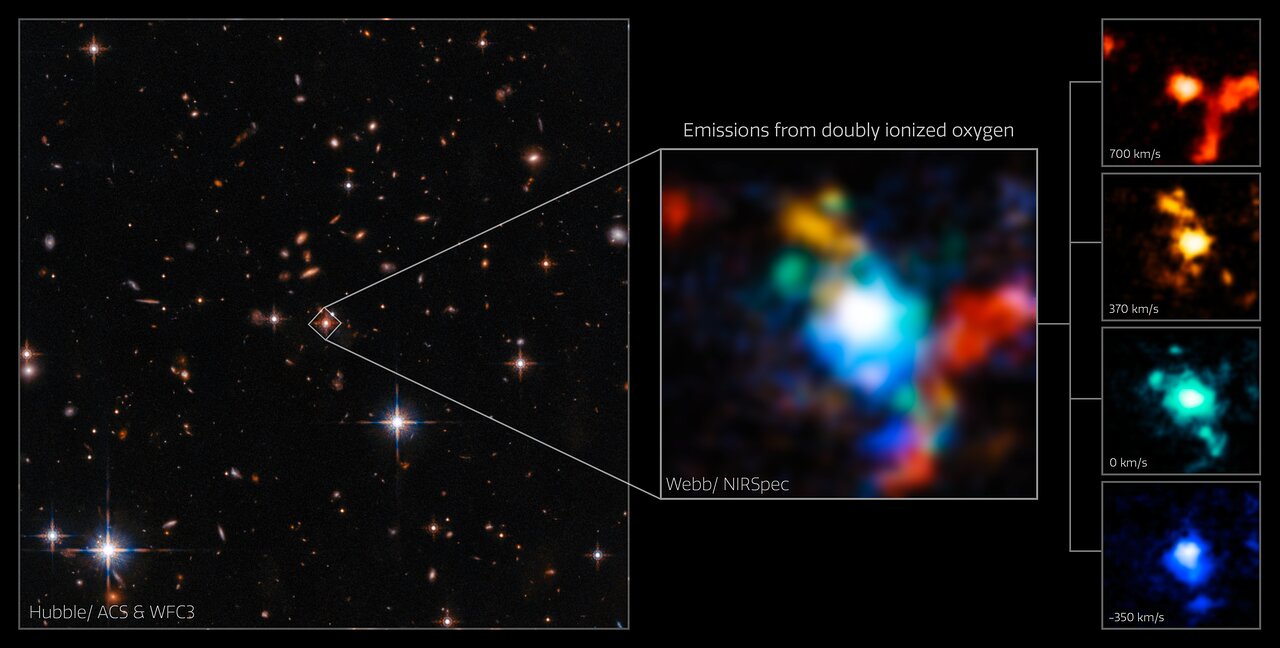James Webb has picked up yet another spectacular sight out in the cosmos. This time the space telescope spotted a “rainbow knot” made up of an extremely red quasar, as well as several massive galaxies around it. The knot would have existed around 11.5 billion years ago. The latest quasar image from James Webb is yet another reminder of just how vast space is.
Quasars like the one that James Webb just captured an image of, are the energetic centers of galaxies that can appear very bright in the sky at night. These galactic centers most often have supermassive black holes in them – similar to the Milky Way’s supermassive black hole. They’re also usually enveloped by superheated plasma, and can even sometimes explode with bursts of energy.
This newest quasar captured in a new James Webb image is named SDSS J165202.64+172852, and scientists believe it existed long ago, in the ancient universe. As such, the light that we see from it in James Webb’s instruments has traveled billions of years to reach our region of space.
The image, which I’ve included above, isn’t the most detailed image that we’ve ever seen from James Webb. But, the quasar in this James Webb image is a lot further away than the recently imaged Pillars of Creation, or even the targets of Webb’s first images. As such, the telescope has to peer through a much deeper point of space, making for a far blurrier image.

Despite the blurriness of the image, though, you can clearly make out the rainbow-knotted look of the quasar and the galaxies that surround it in the latest James Webb image. The light from the quasar has also been redshifted, meaning that its wavelengths have been stretched by the universe’s expansion, making it shift more toward the red end of the electromagnetic spectrum.
Previously some scientists believed the quasar in this James Webb image could be colliding with another galaxy. However, with James Webb’s instruments, we’re able to see a clearer picture, and it’s easy to make out at least three surrounding galaxies visible in the image. However, they are extremely close together, which is why some have begun to refer to them as a “knot.”
James Webb is capable of peering far back into the ancient universe, just as evidenced by this new image. By using the space telescope to peer at Mars and other planets, we’re also learning more about those planets, and even confirming things we’ve already formed theories around.
Looking for more space news? Scientists now say that climate change on Mars could have been caused by ancient microbes now burrowed deep below the surface.








